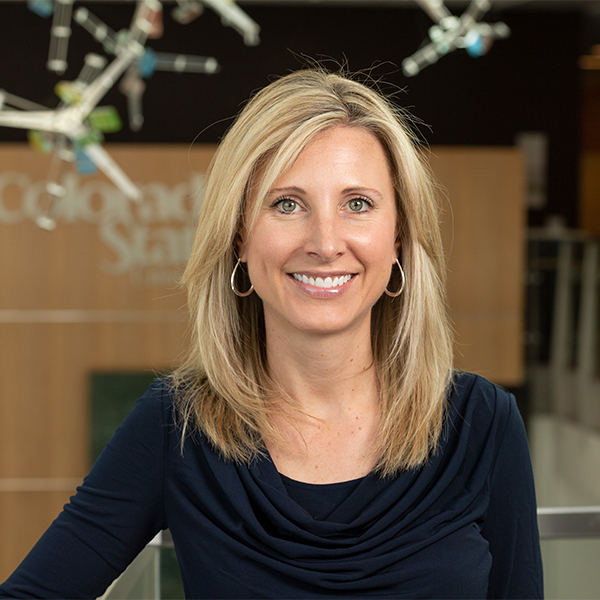
New research from Colorado State University’s College of Business challenges the belief that financial vulnerability only affects low-income consumers, reframing it as a pervasive, dynamic issue that affects people across the socioeconomic spectrum.
The research team, which includes the marketing department’s Kelly Martin, redefines consumer financial vulnerability as the risk of incurring future harm based on the consumer’s access to financial resources. Most consumers, they say, will experience varying degrees of financial vulnerability throughout their lives.
In the past, many researchers conflated financial vulnerability – being at risk of experiencing harm – with the harm itself, and consumers were often considered financially vulnerable only if their income fell below a set threshold. Separating the terms to indicate that financial vulnerability foreshadows harm makes this new, theory-driven framework of a continuum of financial vulnerability possible.
“Our goal was not only redefining, but also reconceptualizing and trying to get the field of marketing to think about these ideas in a different way,” Martin said.
The research, published in Journal of Marketing, proposes using income as just one of many factors to determine consumers’ financial vulnerability.

“Beyond Income: Dynamic Consumer Financial Vulnerability”
Linda Court Salisbury1, Gergana Y. Nenkov1, Simon J. Blanchard2, Ronald Paul Hill3, Alexander L. Brown4 and Kelly D. Martin
Journal of Marketing
1 Boston College
2 Georgetown University
3 American University
4 Texas A&M University
“Sometimes, we equate financial vulnerability with somebody just being poor, and one of our key premises is that you can have people who have what seems like a lot of wealth be very financially vulnerable, given the unique makeup of their financial portfolio,” Martin said.
“When you look at how little people save, for example, even though they may seem on paper to be doing all of the right things, it could just take one little shock or inflection point in their financial reality to put them into a place where they realize harm.”
COVID-19 pandemic exposes consumers’ financial vulnerability
Martin and her coauthors began working on this research shortly after the pandemic hit the United States, exposing the financial vulnerability with which many consumers had been living. The financial impacts of the pandemic weren’t limited to people who were already considered low-income. Tens of millions of people across the country suddenly became unemployed and many small businesses struggled. Demand at food banks soared.
“We were all seeing these same things from our own research vantage points about how COVID created this huge shock for people,” Martin said. “We talk about these financial shocks in the paper, and it was this unprecedented shock that, for a lot of people who looked like they were in a financially stable place, they really had underlying vulnerability the whole time. COVID was that shock that forced a lot of harm that likely wouldn’t have been realized had it not occurred.”
As an example, the researchers shared the story of Joshua, a 60-year-old political consultant who found himself searching for a job during the pandemic after the senator he worked for retired at the end of his sixth term. He and his spouse had the appearance of wealth – they owned two newer-model, high-end cars and a home in an exclusive suburb of Washington, D.C., and they sent their children to private colleges – but after six months of looking for work in the area, they were forced to begin liquidating their retirement accounts.
Joshua and his spouse began to consider looking in other job markets, but the pandemic made work harder to find, and many employers wanted younger, less-costly employees. Their situation seemed unlikely to improve, increasing the likelihood that they might default on their mortgage or car loans.
“The cyclical nature of Joshua’s profession, the debt load required to sustain his family’s standard of living and the economic and public health environments left him financially vulnerable — he is at increasing risk of harm, though has not yet experienced harm,” the paper says. “Is it possible for marketers and policy makers to anticipate such increasing financial vulnerability? What role could their strategies and policies play in his transition up or down this vulnerability continuum?”
Inspiring further research
In the new conceptual framework developed by Martin and her coauthors, consumer financial vulnerability is influenced by a consumer’s access to financial resources as well as their consumption choices. That vulnerability can – but doesn’t always – lead to future realized harm.
Their research offers a new way to calculate where a consumer falls on a spectrum of financial vulnerability. It could have a significant impact on academics in marketing, who often use these demographic variables as controls when studying consumers.
“Simply looking at those demographic variables – usually, income is one of them – is not sufficient to get an accurate picture of a consumer’s financial reality,” Martin said. “That’s why we go through the arguments about how different an understanding of consumer financial vulnerability would be relative to those already known methods.”
The paper also includes five research propositions, which Martin describes as “interesting research questions that a PhD student could pick up and write their dissertation on.”
“The whole idea was, ‘Let’s encourage future research, because we’ve identified this problem, we’ve mapped it out, and we think that research could benefit by taking one of these questions that we’ve proposed or implications and running with it,’” she said.
Martin was especially interested in the paper’s fifth research proposition, which argues that increased financial literacy can’t solve the problem of consumer financial vulnerability.
“To be a little bit cynical here, you’ll have firms saying things like, ‘We need to increase consumer financial literacy,’ but at the same time, they’re using practices that are exploitative of consumers’ financial well-being,” Martin said. “What happens when we, as a society, say that consumer financial literacy is the panacea or the fix to all of this, we put all of the responsibility on the consumer.”
In some ways, it’s similar to issues seen in the consumer data privacy field, which Martin has spent much of her career researching.
“We’re told, as consumers, all the time that we need to understand better security practices and two-factor authentication and password changes and all of these things that put all the responsibility on us, while firms are allowed to be predatory in multifaceted ways,” Martin said. “The same thing is very true on the financial side.”
For many consumers, that’s just not enough.
“Even the most sophisticated consumer can have things occur to their financial reality that completely upset the system,” Martin said. “These inflection points or these shocks that lead to harm that you know couldn’t be offset even through the greatest of financial literacy.”
The College of Business at Colorado State University is focused on using business to create a better world.
As an AACSB-accredited business school, the College is among the top five percent of business colleges worldwide, providing programs and career support services to more than 2,500 undergraduate and 1,300 graduate students. Faculty help students across our top-ranked on-campus and online programs develop the knowledge, skills and values to navigate a rapidly evolving business world and address global challenges with sustainable business solutions. Our students are known for their creativity, work ethic and resilience—resulting in an undergraduate job offer and placement rate of over 90% within 90 days of graduation.
The College’s highly ranked programs include its Online MBA, which has been recognized as the No. 1 program in Colorado for five years running by U.S. News and World Report and achieved No. 16 for employability worldwide from QS Quacquarelli Symonds. The College’s Impact MBA is also ranked by Corporate Knights as a Top 20 “Better World MBA” worldwide.